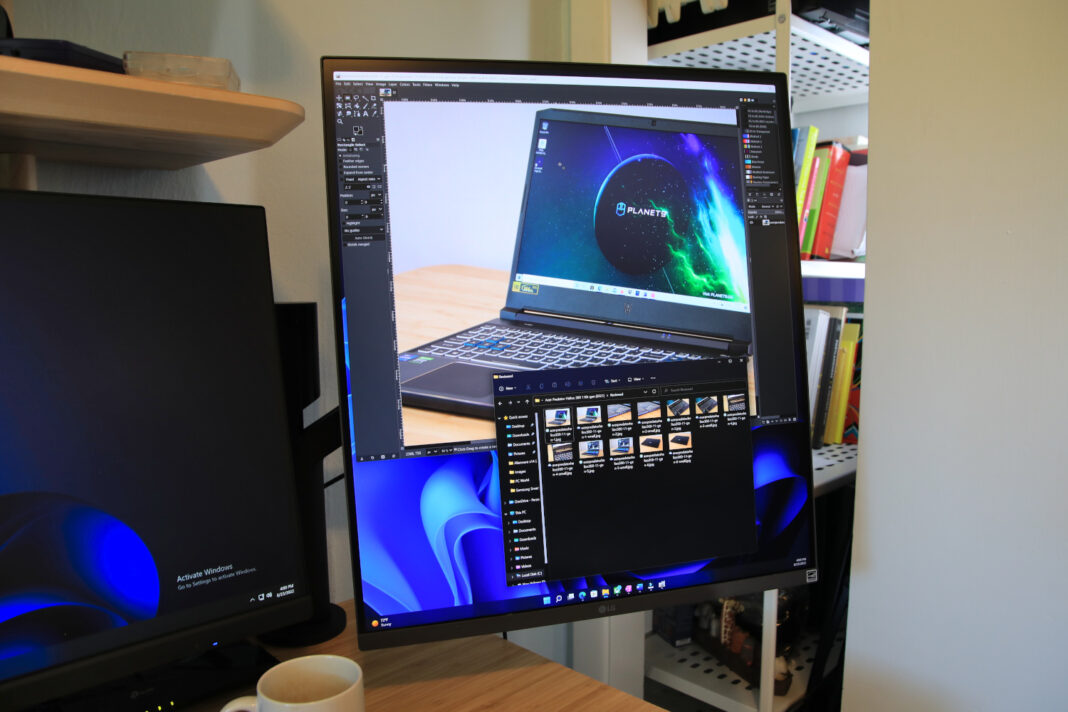テクノロジー

Image: Matt Smith
Photo editors demand a lot from a monitor. It’s a critical tool, falling just behind a photographer’s camera in importance. A great editor can sometimes salvage a mediocre shot, but that’s only possible when an editor has a sharp, color-accurate monitor to rely on.
Below are our picks for the best monitors for photo editing in 2022. To learn more about what specs and features make a good monitor for photo editing, scroll down past our recommendations.
For even more monitor recommendations, check out our roundup of the best monitors across all categories.
1. Asus ProArt OLED PA32DC – Best monitor for photo editing
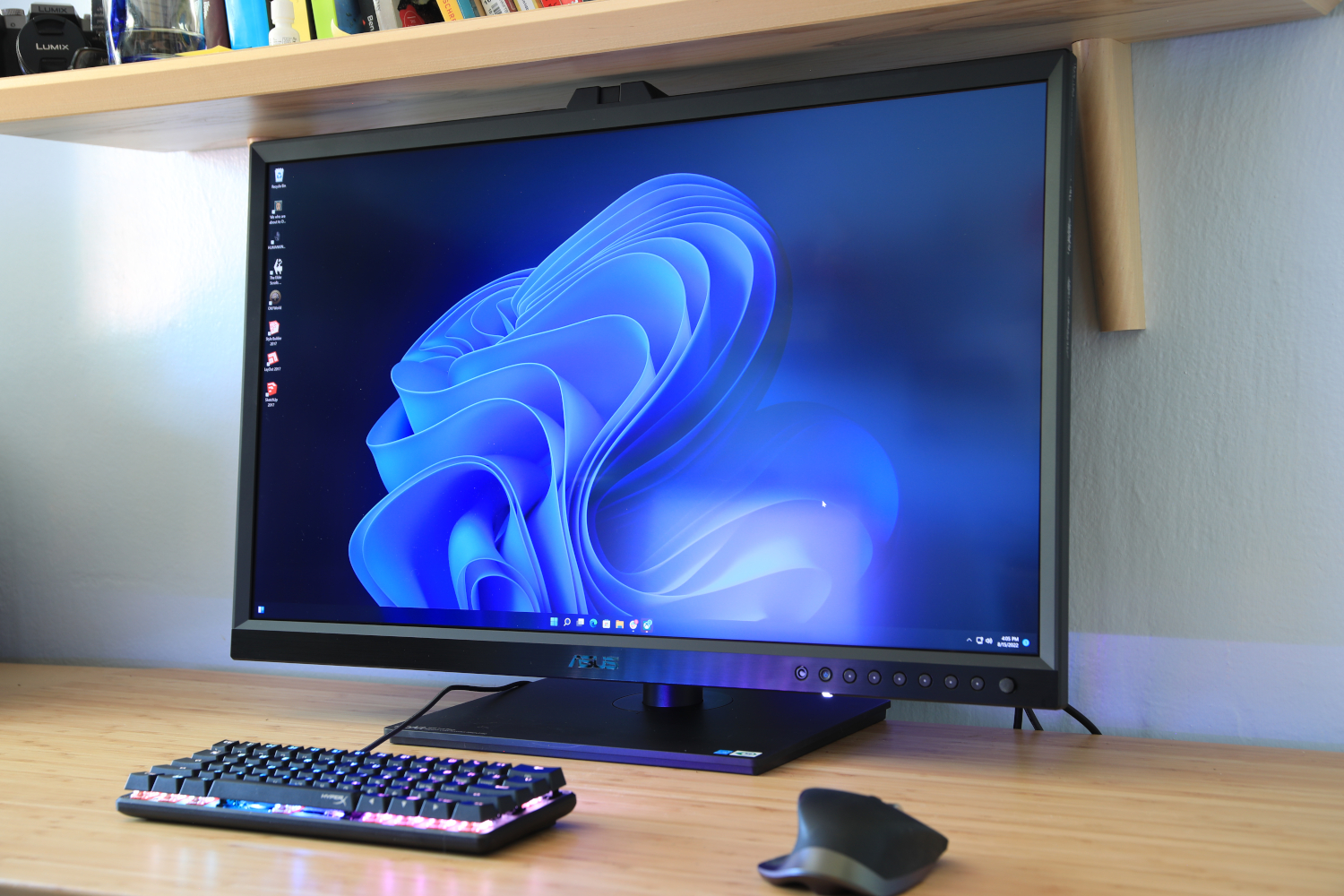
Pros
-
The best SDR image quality yet
-
Good HDR performance
-
Long list of image quality features
-
Exceptionally sturdy
-
Numerous inputs, plus USB hub
Cons
-
HDR brightness could be better
-
Glare can be an issue in bright rooms
-
Only 60Hz, no adaptive sync
Asus’ ProArt PA32DC is a pricey flagship display with amazing image quality and tons of features. It might be overkill for some photo editors but, if you want the best, this is it.
The Asus ProArt PA32DC has a 4K OLED panel. It’s among the few 4K OLED monitors on the market and, unlike less expensive OLED monitors, has a type of OLED panel with a standard RGB subpixel layout that will not cause image-quality quirks on Windows machines.
Going OLED leads to an excellent contrast ratio, but photo editors are more likely to be drawn to its color performance. This monitor can display 100 percent of sRGB, 99 percent of DCI-P3, and 98 percent of Adobe RGB. There are a few monitors that can outperform it in either DCI-P3 or Adobe RGB, but we’ve yet to test a monitor that beats it in both.
In an unusual move, this monitor has a built-in carrying handle, and the height-adjustable stand can be replaced with screw-on legs that fold flat for travel. It’s perfect for professional photographers who need to edit on-site. This is a USB-C monitor, as well, with DisplayPort Alternate Mode and 65 watts of Power Delivery for charging connected devices.
Priced at $3,499, the Asus ProArt PA32DC is expensive. Most photo editors don’t need this level of performance—but this monitor is ideal if you need nearly perfect color.
Read our full
Review Asus ProArt OLED PA32DC
2. Dell U3223QE – Best 4K monitor for photo editing
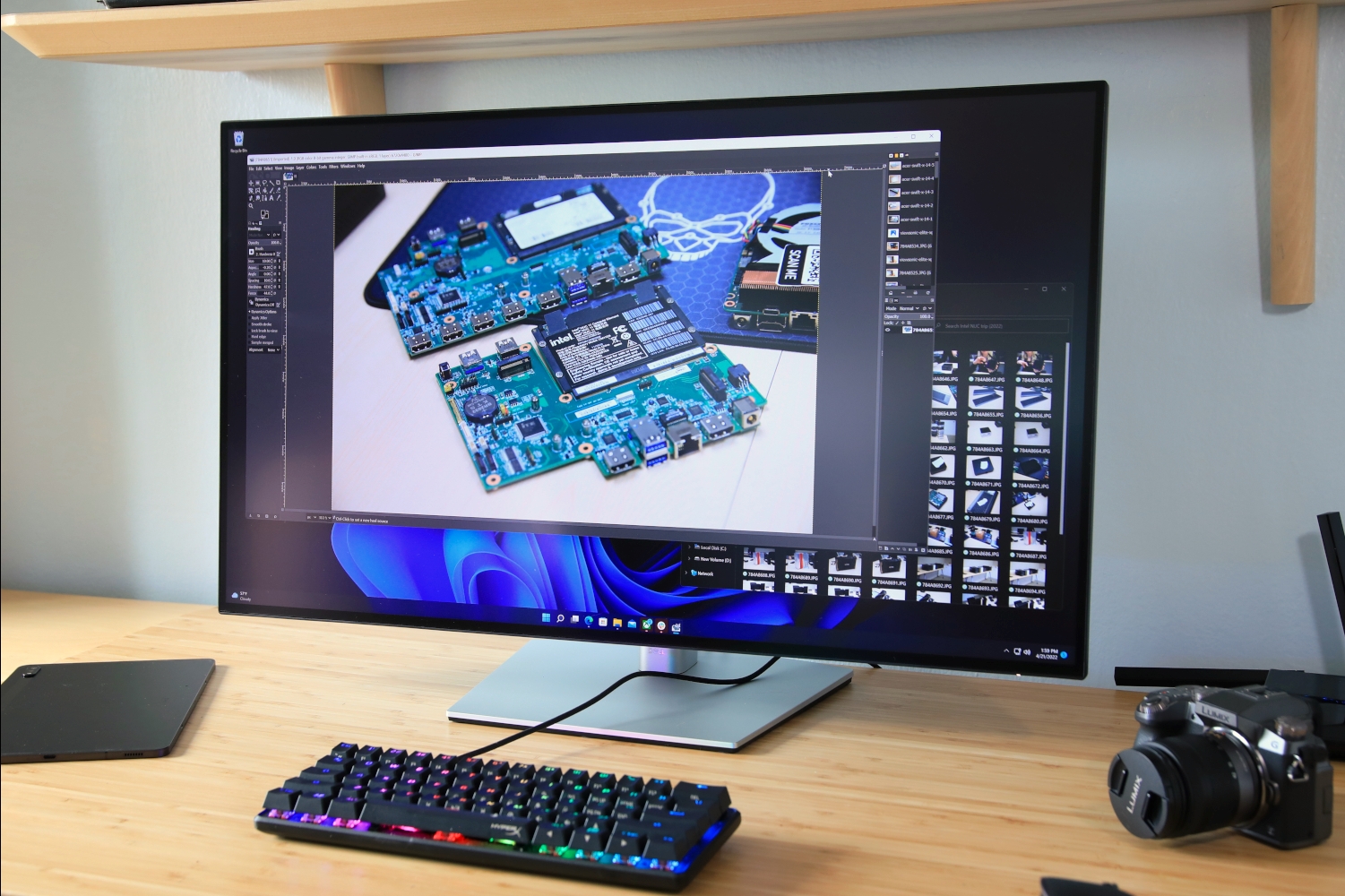
Pros
-
IPS Black panel fulfills its promise
-
Accurate color with wide gamut
-
High brightness in SDR
-
USB-C hub with 90 watts of power
Cons
-
Edges of display are noticeably bright
-
HDR performance disappoints
-
Only a 60Hz panel
The Dell U3223QE is a premium monitor with accurate color and many useful features.
This is a 32-inch 4K monitor with an IPS Black panel. IPS Black is a new type of panel with roughly double the contrast ratio of older IPS panels. The result is a richer, more lifelike image with a better sense of depth.
It’s an extremely accurate monitor with a wide color gamut that spans 100 percent of sRGB and 99 percent of DCI-P3, as well as 89 percent of Adobe RGB. Color temperature and gamma results are also on-target at default settings and can be adjusted to your preferences in the on-screen menu system.
This monitor has a USB-C port with DisplayPort Alternate Mode and up to 95 watts of Power Delivery, which makes it ideal for use with a USB-C compatible laptop. The USB-C port connects to a built-in hub with several USB-A ports, ethernet, and DisplayPort-out.
Want a smaller monitor? Consider the Dell U2723QE. It’s a 27-inch 4K monitor with the same features as the U3223QE. Its smaller size also cuts a couple hundred dollars off the price.
Read our full
Review Dell U3223QE
3. Asus ProArt PA279CV – Best mid-range monitor for photo editing
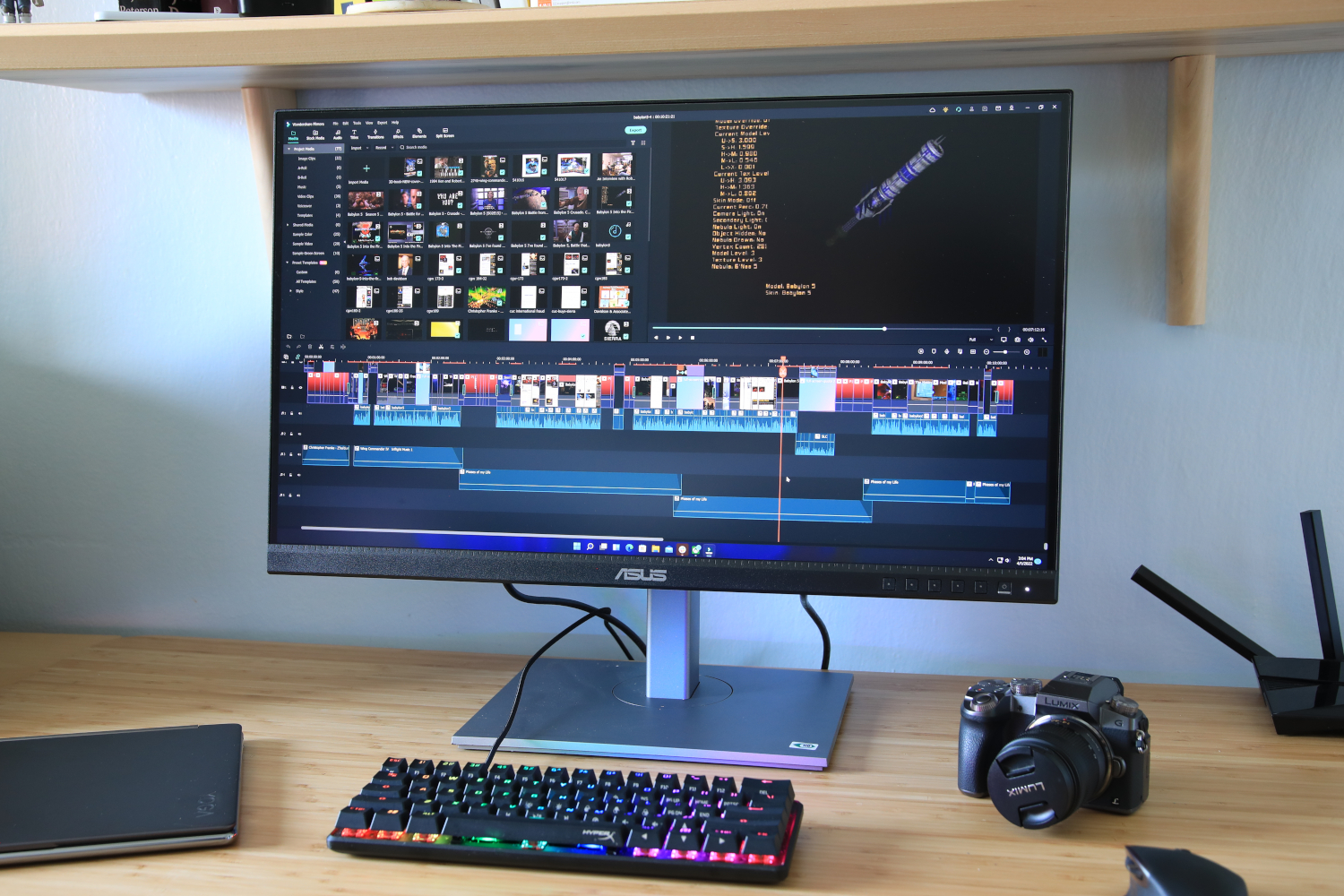
Pros
-
Accurate image
-
High maximum brightness
-
Menu settings allow calibration
-
Has USB-C with 65 watts Power Delivery
-
Competitive price
Cons
-
Unimpressive design
-
Luminance uniformity could be better
-
HDR is bright but otherwise falls short
The Asus ProArt PA279CV is an awesome pick for professional photo editors with less demanding workflows. It will get the job done nine times out of 10—and for less than $500.
This is a 27-inch 4K monitor with an IPS panel. It doesn’t have an amazing contrast ratio but makes up for that with color accuracy. This monitor’s default accuracy sits just a hair behind the Dell U3223QE. It also has an even sharper picture, since it packs 4K resolution into a smaller display space.
Color gamut is the price paid for, well, the price. This monitor handles 100 percent of sRGB but only 84 percent of DCI-P3 and 86 percent of Adobe RGB. That’s often fine, but it could be an issue if you edit photos for clients that use DCI-P3 or Adobe RGB as their go-to color gamut.
Despite its pricing, this monitor has a USB-C port with DisplayPort Alternate Mode and up to 65 watts of Power Delivery for charging connected devices. The USB-C port even connects to four USB-A ports, making it a useful USB-C hub.
Read our full
Review Asus ProArt PA279CV
4. NZXT Canvas 27Q – Best budget monitor for photo editing
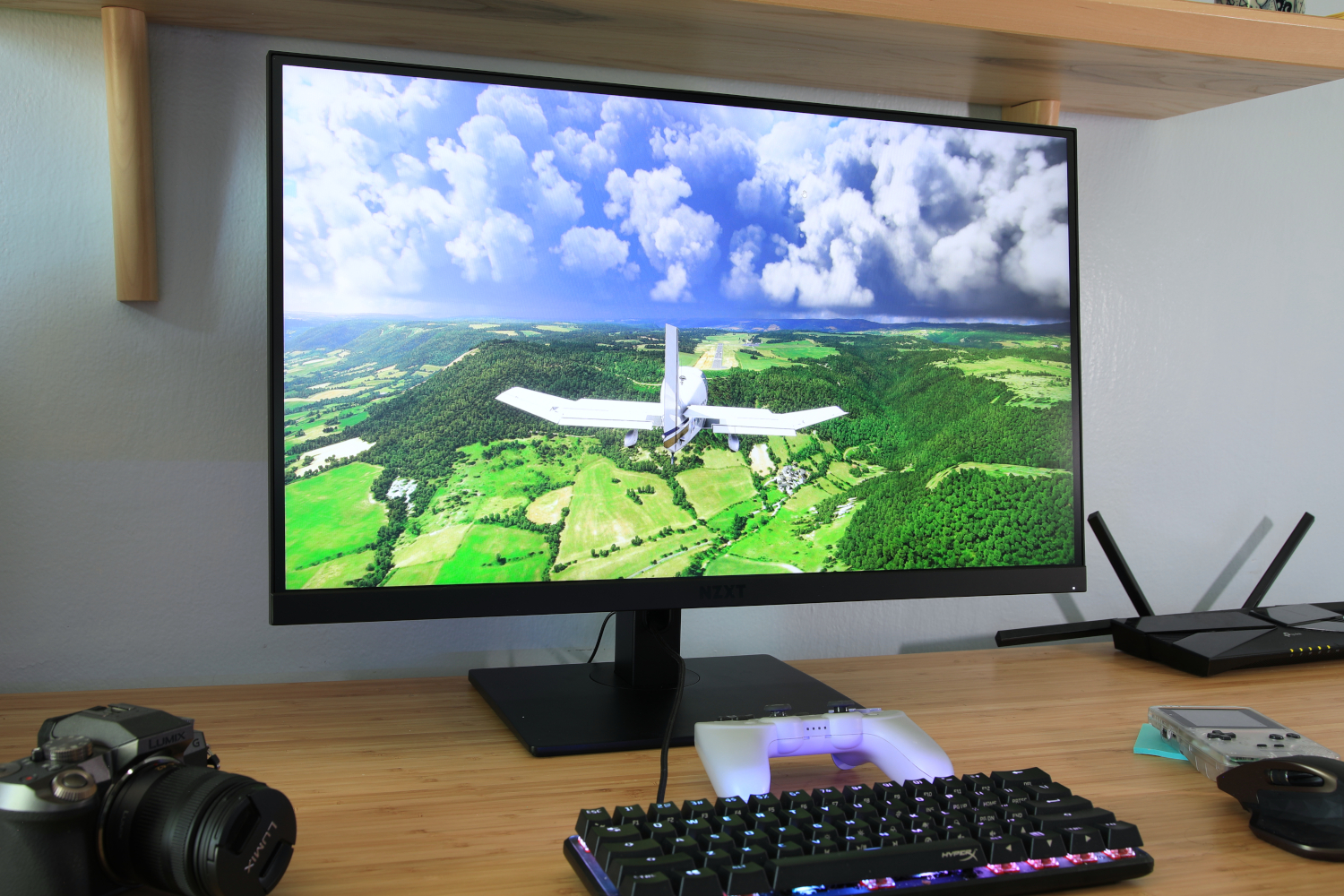
Pros
-
Attractive and robust design
-
Four video inputs including USB-C
-
Great color performance
-
High motion clarity at 144Hz and 165Hz
Cons
-
Limited image quality adjustment
-
Speakers not included
-
HDR mode is barebones
Most monitors sold for less than $300 are a bad fit for photo editing. The NZXT Canvas 27Q is a rare exception.
This is a 27-inch 1440p monitor with an IPS panel. The monitor’s resolution is its key weakness, as 2560×1440 can feel tight when editing modern photos. However, it’s fine if you often crop down your work.
Color performance is astounding for the price. We recorded better color accuracy from this monitor than from the Dell U3223QE or Asus ProArt PA279CV. Color gamut is good, as well, supporting 100 percent of sRGB, 97 percent of DCI-P3, and 87 percent of Adobe RGB. Its overall image quality doesn’t match these more expensive alternatives, but it’s close.
The monitor even packs a few extras. It has a USB-C port with DisplayPort Alternate mode, and it works as a USB-C hub for two downstream USB-A ports. Power Delivery isn’t supported, however, so the USB-C port won’t charge a connected device. The monitor has an enhanced maximum refresh rate of 165Hz, making it a good choice for gaming.
This monitor has an MSRP of just $319.99 (and frequently retails for $249.99 from NZXT). That price doesn’t include a stand, which is a $40 extra. It’s a remarkable value and a good pick for photo editors on a tight budget.
Read our full
Review NZXT Canvas 27Q
5. LG DualUp 28MQ780-B – Best photo editing monitor for portraits
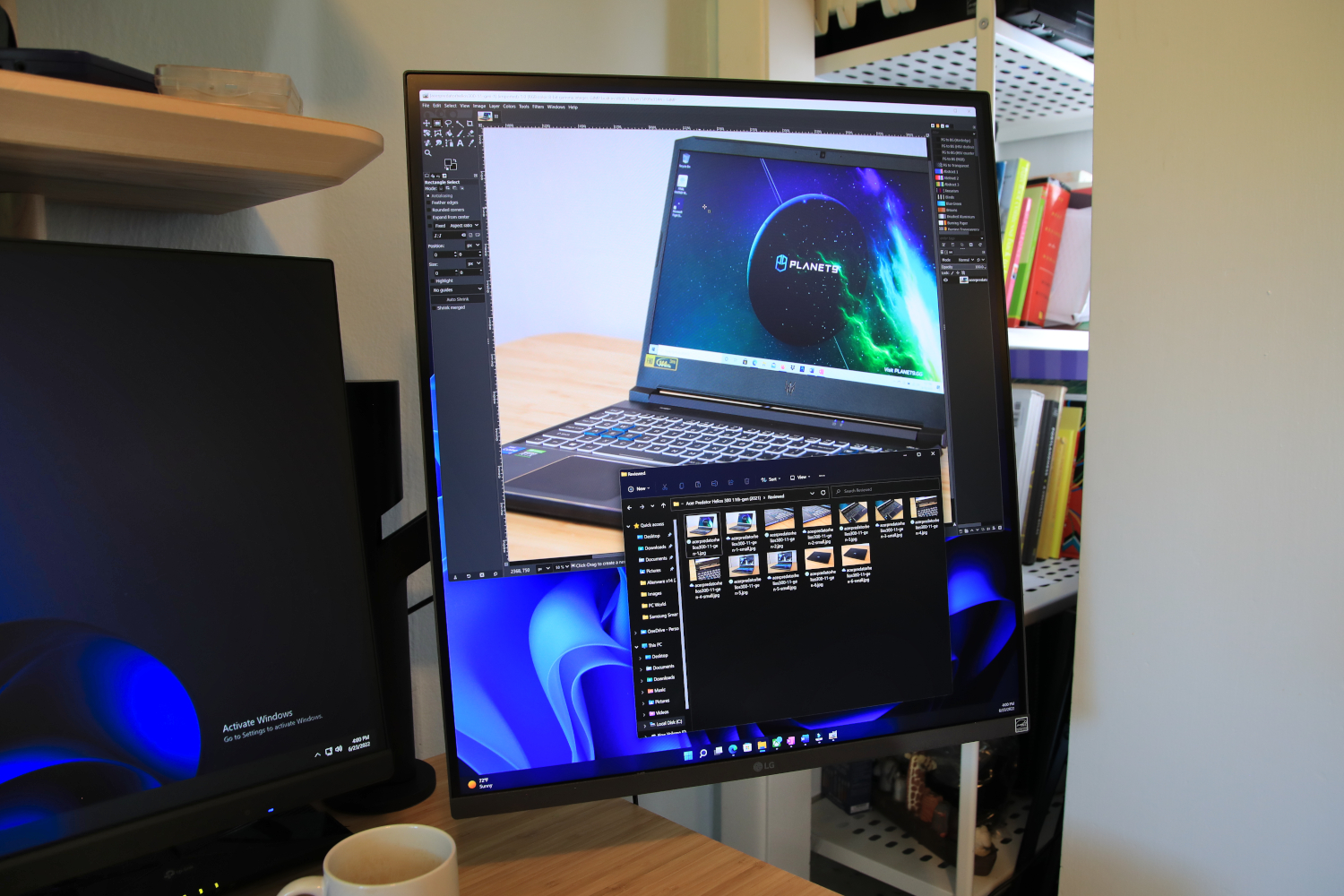
Pros
-
Unique aspect ratio is useful for photo, video editing
-
Makes an awesome second monitor
-
Highly adjustable stand
-
Vivid, accurate color
Cons
-
Difficult to fit in a small home office
-
USB-C port offers limited downstream connectivity
-
Can lack immersion in some content
Most monitors have a widescreen (16:9) aspect ratio—and that’s not always ideal for photo editing. Many photos are at least as tall as they are wide, and portrait photos are much taller than they are wide.
Enter the LG DualUp 28MQ780-B. This is a 28-inch monitor with a resolution of 2560×2880 and a 16:18 aspect ratio. It also has a monitor arm that supports turning the monitor 90 degrees for an 18:16 aspect ratio. This is a better fit for portrait photos, as it provides more vertical pixels than a 5K or 4K widescreen monitor.
The LG DualUp 28MQ780-B also delivers on color performance. It has great color accuracy and a color gamut that spans 100 percent of sRGB, 96 percent of DCI-P3, and 90 percent of Adobe RGB.
LG throws in a USB-C port with DisplayPort Alternate Mode and 90 watts of Power Delivery for charging a connected laptop or device. The USB-C port connects to two downstream USB-A ports, providing USB-C hub functionality.
Priced at $699.99, the LG DualUp 28MQ780-B is not inexpensive but feels reasonably priced for what it offers. As for the competition, well, there isn’t any—this is the only 16:18 monitor on the market right now.
Read our full
Review LG DualUp 28MQ780-B
What to look for in a monitor for photo editing
The best photo editing monitors have excellent color accuracy, a wide color gamut, and a high resolution. Other aspects of image quality, such as contrast or black levels, can also be important but are less critical for accurate editing.
Great color performance is a must-have
Color accuracy and color gamut are key traits for any photo editing monitor. Accuracy is important because it allows a photographer to see a lifelike, realistic representation of their work. Color gamut, meanwhile, determines the range of colors that are displayed.
Most modern monitors are reasonably accurate, but a large gap seperates the best and worst monitors on the market. Color gamut is more of a challenge, as budget monitors usually fall short of displaying 100 percent of sRGB, and are well short of full DCI-P3 and Adobe RGB coverage.
All the monitors on this list, however, excel in both color accuracy and gamut. They have superb default color accuracy and support at least 100 percent of the sRGB color gamut.
4K is a must-have
A high resolution is always preferable for photo editing, as photos are often captured in high resolutions. This is true even when snapping photos on a modern smartphone. The iPhone 14 Pro can capture 48MP photos in RAW format.
Most monitors on this list have 4K resolution. The NZXT Canvas 27Q, which is our budget pick, is the exception.
Image quality settings should be extensive
Photo editors need a wide range of image quality settings that can be used to dial in a monitor’s look. Ideally, a monitor should be good enough out of the box, but experienced photo editors often have needs that differ from the default.
All the monitors on this list provide some level of color accuracy, color gamut, color temperature, and gamma adjustment. The level of customization tends to go up with pricing: the Asus ProArt PA32DC has gobs of adjustments. Even experienced photo editors will need to reference the manual.
USB-C is a useful perk
Photo editors are the perfect audience for a USB-C monitor.
Photo editors are more likely to travel for work than video editors or graphics designers, and may even split between doing some edits at the shoot and some at the office. This more mobile workflow makes an easy docking solution, like USB-C, useful.
All the monitors on this list have a USB-C port that can handle video input over DisplayPort Alternate Mode, and all except for the NZXT Canvas 27Q support USB Power Delivery.
How we test monitors
PC World’s monitor reviews are the result of in-depth testing by staff and freelance writers. We test monitors with a SpyderXElite color calibration tool that provides objective measurements of key metrics like brightness, contrast, color accuracy, color gamut, color temperature, and gamma. These objective metrics help us compare dozens of monitors at once.
FAQ
1.
What makes a monitor good for photo editing?
The three key traits are resolution, color accuracy, and color gamut. Color temperature and gamma performance have a supporting role, as well. All the monitors on this list score well in these areas, with more expensive models outperforming budget options.
2.
What is the best resolution for photo editing?
The best resolution for photo editing is the highest you can afford, which is why Apple leapt to 5K and 6K resolution for its best displays.
If you’re on a Windows computer, however, it’s often preferable to stick with 4K. Very few 5K (and higher) monitors exist for Windows computers, and Windows software often fails to make good use of extreme resolutions.
3.
Do I need HDR for photo editing?
HDR is only sometimes required. While HDR photos are not uncommon, its use is less frequent than it is for video, and most photos are not ultimately viewed in HDR. Whether you need HDR will depend on whether you intend your photos to be viewed in HDR. There are stylistic considerations, too. HDR has a certain “look” that may or may not be desirable.
All the monitors on this list support HDR, and the quality of HDR goes up drastically as price increases. If you happen to do all your work in HDR, then look no further than the Asus ProArt PA32DC: It’s a top-notch HDR performer.
4.
Is an ultrawide monitor good for photo editing?
Ultrawide monitors aren’t the best choice for photo editing.
It all comes down to aspect ratio. Ultrawide monitors have a 21:9 aspect ratio, while most photographers work in aspect ratios somewhere between 16:9 (widescreen) and 3:2 (portrait). In general, photographers need vertical pixels more than other monitor shoppers, and that’s where ultrawide falls short.
Author: Matthew S. Smith
Matthew S. Smith is a freelance technology journalist with 15 years of experience reviewing consumer electronics. In addition to PCWorld, his work can be found on Wired, Ars Technica, Digital Trends, Reviewed, IGN, and Lifewire. Matthew also covers AI and the metaverse for IEEE Spectrum and runs Computer Gaming Yesterday, a YouTube channel devoted to PC gaming history.

